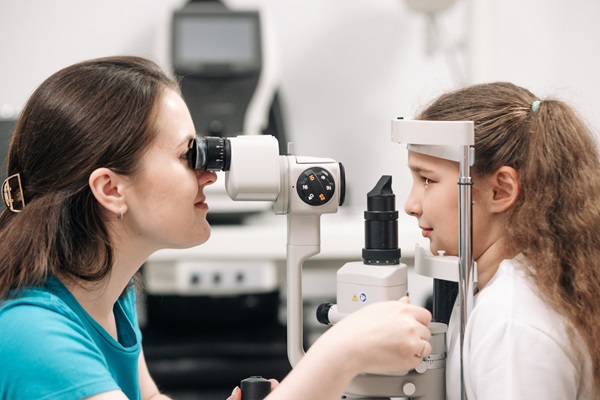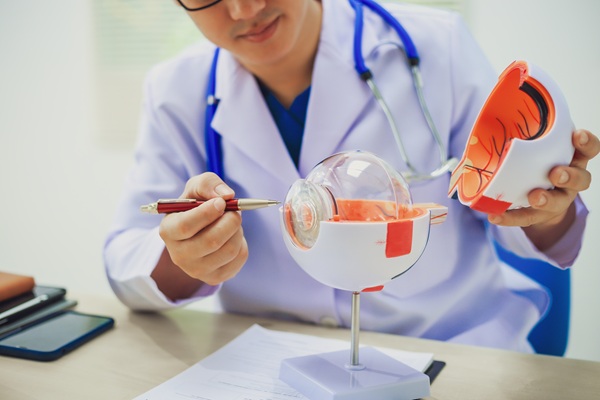3 Signs You Need To Visit an Eye Doctor

Your eye health is an essential part of your overall health. Regular checkups with an eye doctor can often prevent many eye issues and complications, catching them in their early stages. Here are three key signs that it might be time to visit an eye doctor.
1. Persistent pain or discomfort
Eye discomfort can appear in many ways. While occasional eye strain or mild irritation may not indicate an issue, persistent discomfort or worsening symptoms are a clear signal to seek professional care from an eye doctor. Here are a few specific symptoms to watch for:
Redness and irritation
Persistent redness and irritation can be symptoms of several eye conditions, such as conjunctivitis (pink eye), dry eye syndrome, or blepharitis (inflamed eyelids). These conditions are easy to treat. However, an eye doctor needs to diagnose them properly.
Foreign feeling or sensation
If a patient feels like there is something stuck in their eye, even when there is not, it may indicate an injury, such as a corneal abrasion. Chronic dry eye or contact lens issues can also cause this sensation. An eye doctor can determine the cause and provide treatment to alleviate the discomfort at its source.
Severe eye pain
Severe or persistent eye pain is a red flag for several serious conditions, including glaucoma, uveitis (inflammation of the middle layer of the eye), or an eye infection. Glaucoma, in particular, can lead to permanent vision loss if not treated as soon as possible. An eye doctor will perform a thorough examination to diagnose and treat the cause of the patient’s pain.
2. Vision changes
One of the most obvious signs that an individual may need to consult an eye doctor is persistent changes in their vision. These changes may appear as the following:
Blurred vision
Difficulty focusing on objects at various distances can indicate refractive errors like myopia, hyperopia, or astigmatism. Sudden blurred vision may also indicate conditions like diabetic retinopathy or macular degeneration.
Double vision
Seeing two images instead of one is often caused by issues with the eye muscles, corneal irregularities, or neurological problems. Double vision is frequently a symptom that requires immediate medical attention.
Seeing flashes or floaters
Occasional floaters (specks or strings drifting across one’s field of vision) are typically harmless. If floaters appear suddenly and are accompanied by flashes of light, they could indicate retinal detachment, which is a medical emergency.
Difficulty seeing at night
Struggling to see in low-light conditions may indicate the beginning of cataracts or vitamin A deficiency.
Light halos
Seeing light halos, particularly during the middle of the day, may indicate astigmatism or presbyopia. However, it may also reveal more severe underlying vision issues.
Vision changes can significantly impact a patient’s quality of life and indicate serious eye health issues. Early detection and treatment by an eye doctor can prevent further vision and health issues.
3. Frequent headaches
Headaches are a common issue resulting from several reasons, such as dehydration and sinus issues. However, frequent headaches, particularly after reading or using a computer, can indicate underlying vision issues.
Eyestrain
Prolonged use of digital devices or reading without adequate breaks can cause eyestrain, leading to headaches. Uncorrected vision issues like astigmatism and hyperopia often cause eyestrain, which forces the eyes to work harder than normal. Fortunately, an eye doctor can prescribe corrective lenses or recommend changes to one’s work habits to reduce eyestrain and prevent frequent headaches.
Age-related vision problems
Some patients never need prescription glasses or contact lenses. However, they may need vision correction as they age, causing eye strain. For example, presbyopia is a common age-related condition that affects the ability to see close objects, which can cause significant eye strain and headaches. Regular eye exams can detect these changes in their early stages, allowing an eye doctor to provide the necessary corrective treatments.
Glaucoma
In some cases, headaches can be a symptom of more serious eye conditions like glaucoma. Glaucoma-related headaches are usually accompanied by other symptoms such as blurry vision, eye pain, and halos around lights. Nevertheless, glaucoma needs to be detected as early as possible to prevent further complications and vision loss.
Call our office to schedule an appointment
Taking care of your eyes is important to maintaining your overall health. Ignoring vision issues and other symptoms can lead to more serious health issues down the road. Our team is here to help protect your eye health and resolve any issues you may be experiencing. Call our office to schedule an appointment.
Request an appointment here: https://www.texasoptical.net or call Texas Optical at (214) 771-7333 for an appointment in our Dallas office.
Check out what others are saying about our services on Yelp: Read our Yelp reviews.
Recent Posts
A diabetic eye exam is important for spotting and managing vision problems linked to diabetes. Regular eye exams help prevent issues like diabetic retinopathy, macular edema, and permanent vision loss. Understanding what happens during and after a diabetic eye exam can ease concerns and encourage better eye care for people with diabetes.The main goal of…
Prescription glasses are an essential part of daily life for many individuals, providing clear vision to move about safely and confidently. Unfortunately, accidents can happen, and glasses can be damaged through falls, sitting on them, forceful impacts, or accidental drops. Knowing what to do when this occurs is crucial to minimizing the impact on your…
Optometry is a branch of medicine that is important for maintaining your vision and overall health. Getting regular professional care from an optometrist can help you find and treat vision problems early, before they worsen. Optometrists can treat common vision issues and spot serious eye diseases before they worsen. Their services support the long-term health…
When the time comes to purchase prescription glasses, many individuals face the dilemma of choosing between buying from an optometrist's office or an online retailer. Other options offer advantages and potential drawbacks, depending on a person's unique needs and preferences. Understanding the key differences between buying glasses from an optometrist office and purchasing them online…


